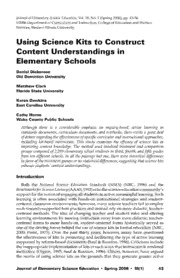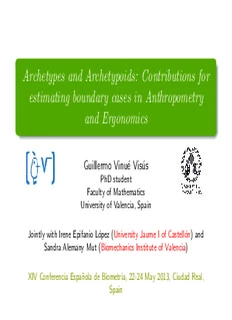
Pdf of the presentation - Universitat de València PDF
Preview Pdf of the presentation - Universitat de València
Archetypes and Archetypoids: Contributions for estimating boundary cases in Anthropometry and Ergonomics Guillermo Vinu´e Visu´s PhD student Faculty of Mathematics University of Valencia, Spain Jointly with Irene Epifanio Lo´pez (University Jaume I of Castello´n) and Sandra Alemany Mut (Biomechanics Institute of Valencia) XIV Conferencia Espan˜ola de Biometr´ıa, 22-24 May 2013, Ciudad Real, Spain AccommodationprobleminAnthropometryandErgonomics Usualapproaches Archetypalanalysis Ourcontributions Conclusions Basicreferences Outline 1 Accommodation problem in Anthropometry and Ergonomics 2 Usual approaches 3 Archetypal analysis What’s an archetype? Statistical definition of archetype 4 Our contributions Archetypal analysis vs PCA Archetypoid analysis 5 Conclusions 6 Basic references GuillermoVinu´eVisu´s ArchetypesandArchetypoids 2/20 AccommodationprobleminAnthropometryandErgonomics Usualapproaches Archetypalanalysis Ourcontributions Conclusions Basicreferences Accommodation problem in Anthropometry and Ergonomics Theaccommodationistheprocessofmutualadaptationbetweenpersons. Products intended to fit the users must be designed considering their size and shape → Generation of several representative human models. The human models represents the anthropometric variability of the target population. The appropriate selection of this small group is critical. If the hard to fit extreme individuals are previously identified, the time and cost of the design process is reduced. GuillermoVinu´eVisu´s ArchetypesandArchetypoids 3/20 AccommodationprobleminAnthropometryandErgonomics Usualapproaches Archetypalanalysis Ourcontributions Conclusions Basicreferences Usual approaches Percentile analysis: Traditional method used. Drawbacks: Univariate approach. They are not additive. (Image taken of Robinette et al. (1981)) GuillermoVinu´eVisu´s ArchetypesandArchetypoids 4/20 AccommodationprobleminAnthropometryandErgonomics Usualapproaches Archetypalanalysis Ourcontributions Conclusions Basicreferences Regression: An alternative to approximate a percentile person. The predicted numbers are additive. Drawback: It only provides average values for the predicted measurements. Principal component analysis (PCA): ItconsidersthefirstPC andselectsseveralextremepoints inanellipse(orcircle)whichcovers acertainpercentageofthedata. Drawbacks: Partofthedatavariation isremoved. Thenumberofcaseswould increaseifwewantedtoconsidermore variation. Our proposal: ARCHETYPAL ANALYSIS (AA) (Cutler et al. (1994)). GuillermoVinu´eVisu´s ArchetypesandArchetypoids 5/20 AccommodationprobleminAnthropometryandErgonomics Usualapproaches Archetypalanalysis What’sanarchetype? Ourcontributions Statisticaldefinitionofarchetype Conclusions Basicreferences In our everyday language... GuillermoVinu´eVisu´s ArchetypesandArchetypoids 6/20 AccommodationprobleminAnthropometryandErgonomics Usualapproaches Archetypalanalysis What’sanarchetype? Ourcontributions Statisticaldefinitionofarchetype Conclusions Basicreferences But in Statistics??? AND: Source: Paquet,E.ExploringAnthropometricDataThroughClusterAnalysis. PublishedinDigitalHumanModelingforDesignandEngineering(DHM).June15-17, 2004. OaklandUniversity,Rochester,Michigan,USA.NRC46564. An archetype is not a prototype!!! GuillermoVinu´eVisu´s ArchetypesandArchetypoids 7/20 AccommodationprobleminAnthropometryandErgonomics Usualapproaches Archetypalanalysis What’sanarchetype? Ourcontributions Statisticaldefinitionofarchetype Conclusions Basicreferences Statistical definition of archetype Let be an n×m matrix X, multivariate database. The AA aims at obtaining the n×k matrices α and β which minimize: n k n k n RSS =(cid:88)(cid:107)x −(cid:88)α z(cid:107)2 =(cid:88)(cid:107)x −(cid:88)α (cid:88)β x(cid:107)2 i ij j i ij jl l i=1 j=1 i=1 j=1 l=1 under the constraints k k (cid:88) (cid:88) 1) α =1 with α ≥0 and i =1,...,n =⇒ ˆx = α z ij ij i ij j j=1 j=1 n (cid:88) 2) β =1 with β ≥0 and j =1,...,k jl jl l=1 ARCHETYPE: extreme member of the data set that is a mixture of the n (cid:88) actual data points: z = β x j jl l l=1 Archetypes can be computed with the R package archetypes. GuillermoVinu´eVisu´s ArchetypesandArchetypoids 8/20 AccommodationprobleminAnthropometryandErgonomics Usualapproaches Archetypalanalysis ArchetypalanalysisvsPCA Ourcontributions Archetypoidanalysis Conclusions Basicreferences Archetypal analysis vs PCA The goal of AA is to obtain extreme individuals. The level of accommodation is reached with AA. Archetypes cannot be obtained with PCA. The number of archetypes can be decided by the user or by a criterion. GuillermoVinu´eVisu´s ArchetypesandArchetypoids 9/20 AccommodationprobleminAnthropometryandErgonomics Usualapproaches Archetypalanalysis ArchetypalanalysisvsPCA Ourcontributions Archetypoidanalysis Conclusions Basicreferences Archetypoid analysis The archetypes do not correspond to observed individuals: n n (cid:88) (cid:88) zj = βjlxl with βjl =1 and βjl ≥0 l=1 l=1 In some cases it is critical that the archetypes are real subjects. So far the nearest individuals to archetypes are computed in two ways: 1 nearest: Subjects who have the closest dE to archetypes. 2 which: Subjects with the greatest α for each archetype. The identified archetypes can be artificial: “no economist in our sample fits this archetype to 100%” (Seiler et al. (2013)). A new archetypal concept is proposed: the ARCHETYPOID: n n (cid:88) (cid:88) zj = βjlxl with βjl =1 and βjl ∈{0,1} l=1 l=1 An archetypoid is a real observed individual. The archetypoids might not be the same as the nearest/which. The archetypoids always exist even when the features are unavailable. GuillermoVinu´eVisu´s ArchetypesandArchetypoids 10/20
Description:The list of books you might like

Do Epic Shit

A Thousand Boy Kisses

The Spanish Love Deception

Rich Dad Poor Dad

The Worm at the Core: On the Role of Death in Life

Delphi 2 Developer's Guide

Totally Frank: The Autobiography of Frank Lampard

20 Minutes to a Top Performer: Three Fast and Effective Conversations to Motivate, Develop, and Engage Your Employees

Nutrient Composition of Rations for Short-Term, High-Intensity Combat Operations

To Sail Beyond the Sunset

Sustainable Management of Mining Operations

IFRS 15 investment management companies
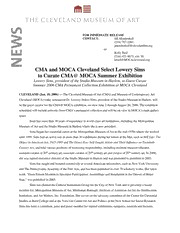
Exhibition - CMA@MOCA

Nonlinear Oligopolies: Stability and Bifurcations
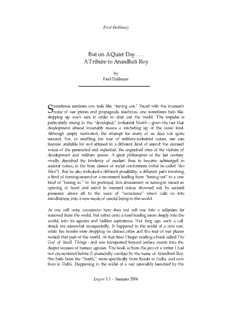
But on A Quiet Day . . . A Tribute to Arundhati Roy
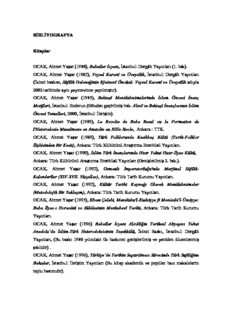
BİBLİYOGRAFYA Kitaplar OCAK, Ahmet Yaşar (1980), Babaîler İsyanı, İstanbul
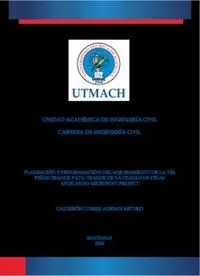
Convert JPG to PDF online
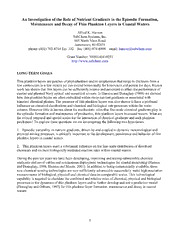
DTIC ADA521776: An Investigation of the Role of Nutrient Gradients in the Episodic Formation, Maintenance and Decay of Thin Plankton Layers in Coastal Waters
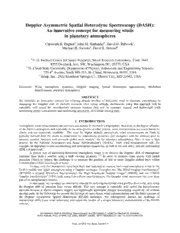
DTIC ADA522013: Doppler Asymmetric Spatial Heterodyne Spectroscopy (DASH): An Innovative Concept for Measuring Winds in Planetary Atmospheres

Byzantine Gospel Maximus the Confessor in Modern Scholarship
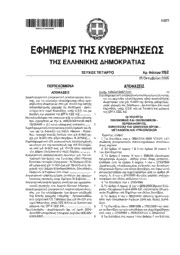
Greek Government Gazette: Part 4, 2005 no. 1152

